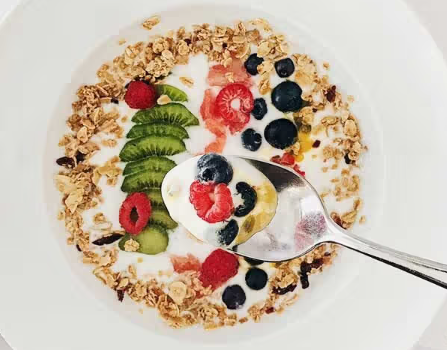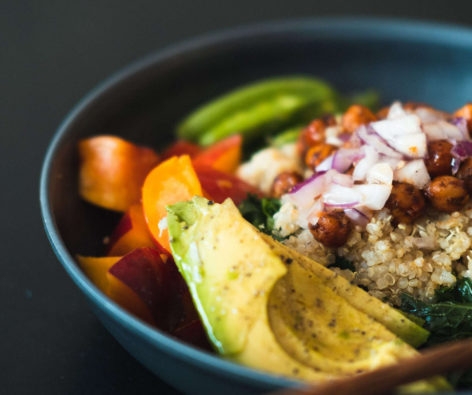
Diverticulitis affects millions of people, causing discomfort and digestive issues. While there’s no one-size-fits-all solution, the right diet can help alleviate symptoms and prevent flare-ups. If you’re living with diverticulitis, understanding which foods to eat and avoid can make a significant difference. Here’s a comprehensive guide to managing your condition through diet.
What Is Diverticulitis?
Diverticulitis occurs when small pouches, called diverticula, in the digestive tract become inflamed or infected. These pouches most commonly form in the large intestine. While diverticulosis (the presence of these pouches) is common and usually symptom-free, when they become inflamed, it results in diverticulitis. Symptoms of diverticulitis include bloating, severe abdominal pain, nausea, fever, and irregular bowel movements. Treatment often includes rest, dietary changes, and antibiotics.
The Diverticulitis Diet: What to Eat and What to Avoid
When managing diverticulitis, diet plays a key role. While there’s no universally prescribed diet, research suggests that some foods can help ease symptoms and reduce the frequency of attacks.
Recovery Diet for Diverticulitis
During an active diverticulitis episode, doctors typically recommend starting with a clear liquid diet to give your digestive system a break. Once the symptoms begin to subside, you can slowly incorporate low-fiber foods. A clear liquid diet generally includes:
- Water
- Clear juices (without pulp)
- Clear broths
- Plain popsicles (no fruit or candy pieces)
- Plain tea
- Jell-O
Once you begin recovering, you can start adding easily digestible, low-fiber foods like:
- White bread
- White rice
- Pasta
- Fruit or vegetable juices (without pulp)
- Canned fruit (peeled and without seeds)
- Cooked vegetables without skin (e.g., green beans or carrots)
- Eggs
- Fish
As you feel better, gradually reintroduce more solid foods.
General Diet for Diverticulosis
For individuals with diverticulosis, a diet rich in fiber is recommended to help maintain gut health and prevent future attacks. Fiber aids digestion, helps maintain regular bowel movements, and supports overall colon health. However, it’s essential to increase fiber intake slowly to avoid bloating or constipation.
Fiber-rich foods to include:
- Vegetables (broccoli, Brussels sprouts)
- Beans and legumes
- Fruits (with skin when possible, like pears, apples, and bananas)
- Whole grains (barley, bran)
Fiber supplements are also a good option if you’re not getting enough from food alone.
Probiotics for Gut Health
Probiotics, which are beneficial bacteria, can support gut health by balancing the microbiome. Probiotics are found in fermented foods like:
- Yogurt
- Kefir
- Kimchi
- Sauerkraut
- Tempeh
- Kombucha
Supplements are also an option if you’re not fond of fermented foods.
Anti-Inflammatory Foods
Since diverticulitis involves inflammation, adding anti-inflammatory foods to your diet can help reduce symptoms. Foods rich in antioxidants and healthy fats are beneficial for this purpose:
- Berries (blueberries, strawberries)
- Tomatoes
- Nuts (almonds, walnuts)
- Avocados
- Salmon (high in omega-3 fatty acids)
- Spinach
If you prefer supplements, options like turmeric and ginger are known for their anti-inflammatory properties. However, if you’re sensitive to spices, consider fruit-based alternatives to avoid irritation.
Additional Considerations for Managing Diverticulitis
In addition to improving your diet, some lifestyle changes can help manage diverticulitis:
- Get Some Sun
Low vitamin D levels have been linked to an increased risk of diverticulitis. Vitamin D plays a role in regulating inflammation and maintaining colon health. Spend some time in the sun to boost your vitamin D levels naturally, or consider a supplement if necessary. - Eat Smaller, Frequent Meals
Rather than consuming large meals, try eating smaller meals more frequently throughout the day. This can help manage your metabolism, control appetite, and stabilize blood sugar levels. It has also been shown to ease gastrointestinal discomfort and improve overall digestion.
Foods to Avoid with Diverticulitis
Although there’s no strict list of foods to avoid, certain foods may increase the risk of diverticulitis flare-ups. While nuts and seeds were once discouraged, recent studies have shown they do not cause problems for most people. However, you should still limit the intake of the following:
- High-fat foods (fried items, red meat)
- Refined grains (white bread, pasta)
- Full-fat dairy products
- Sugary foods and drinks
- Processed meats
Avoiding these foods may help reduce the frequency of attacks and ease your digestive symptoms.
How to Start a Diverticulitis Diet
If you’re dealing with diverticulosis or have experienced diverticulitis in the past, it’s never too early to make dietary changes. Here’s how you can get started:
- Consult Your Doctor
Before making any significant dietary changes, speak with your healthcare provider or nutritionist. They can help guide you on the best approach and ensure your changes are safe for your health. - Evaluate Your Current Diet
Keep track of what you eat for a week to identify areas for improvement. Pay attention to your fiber intake, your consumption of high-fat foods, and whether you’re eating frequent meals. This journal will help you make more informed changes. - Make Small Changes
Start by making gradual adjustments to your diet. For instance, introduce more fiber into your meals slowly, and observe how your body reacts. Avoid making drastic changes all at once. - Stay Hydrated
Drinking plenty of water is essential, especially if you’re increasing fiber intake. Proper hydration helps prevent constipation and supports digestion. - Seek Medical Help if Needed
If you experience any adverse reactions or changes in bowel movements after making dietary changes, consult your doctor immediately.
Conclusion
Managing diverticulitis through diet is an ongoing process that requires patience and awareness. By incorporating fiber-rich foods, probiotics, and anti-inflammatory ingredients into your diet, you can support gut health and reduce the risk of flare-ups. Always consult with your healthcare provider before making significant changes, and remember that small, consistent changes can have a big impact on your long-term health.










